
NavList:
A Community Devoted to the Preservation and Practice of Celestial Navigation and Other Methods of Traditional Wayfinding
Re: Sundial
From: Gary LaPook
Date: 2016 May 2, 20:39 +0000
From: Gary LaPook <NoReply_LaPook@fer3.com>
To: garylapook@pacbell.net
Sent: Saturday, April 30, 2016 1:18 AM
Subject: [NavList] Sundial
Attached File:


Attached File:
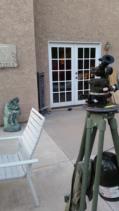

Attached File:
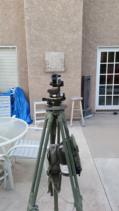

Attached File:
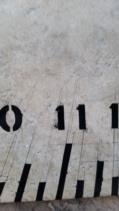

Attached File:


Attached File:
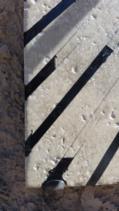

Attached File:
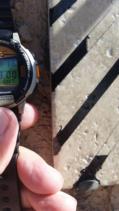

From: Gary LaPook
Date: 2016 May 2, 20:39 +0000
Last chance to determine the precision with which you can read the time from a sundial like mine. Look at the video a few times, after blocking your view of the watch face (so that it doesn't bias your readings), write down the readings and see how consistent they are. Tomorrow I will post the correct answer.
gl
From: Gary LaPook <NoReply_LaPook@fer3.com>
To: garylapook@pacbell.net
Sent: Saturday, April 30, 2016 1:18 AM
Subject: [NavList] Sundial
So, I decided to make a sundial.
But, if I was going to make one I wanted it to be accurate, not just decorative. There are three things that affect the accurarcy of a sundial, the markings on the dial, the alignment of the gnomon and the precision with which the shadow can be read against the markings on the dial. So I bought a standard twenty inch floor tile for the dial and a piece of aluminum bar stock for the gnomon. The most difficult part was drilling the two holes in the tile for mounting the gnomon, tiles are hard.
I decided to make a vertical sundial and place it on the south side of my house. I measured the alignment of the wall by setting up my aiming circle in a position where I could sight along the surface of the wall and measured the azimuth. I then sighted on the sun and measured its azimuth. Doing the normal calculation for azimuth and comparing the sun's measued azimuth with the measure azimuth of the wall let me determine the alignment of the wall, it was within half a degree of straight east, I was amazed that the builder of the house had gotten it that close since there was no particular reason for the house to be so exactly aligned.
I used four aluminum brackets to mount the tile after I had attached the gnomon that I had bent approximately to my latitude. The fact that the wall happened to be so close to east was not important since the alignment of the dial surface is not important to the accuracy of a sundial. What is important is the alignment of the gnomon since it must run true north and be at the exact angle of the latitude. So I set up my aiming circle again and placed it in line with the gnomon. Repeating the prior steps i was able to adjust the gnomon right and left to get to it to point exactly true north. To set the gnomon for my latitude I used a bubble sextant set to my latitude, 34 16', to sight up along the axis on the gnomon and bent it until it was properly aligned.
To acheive markings that allow a precise way to tell the time I decided that it was too imprecise to see when the shadow aligned with the marks. Instead it would be more precise to observe when he leading edge of the shadow just touched the edge of the markings. I decided that the most accurate way to mark the dial was not to calculate where the markings should be but to simply make the marks by drawing them with a pencil and strait edge along the edge of the sun's shadows at the correct times. My longitude is 118 54.0' so my local apparent time is 4 minutes and 24 seconds fast on the 120th meridian LAT. Rather than marking the sundial to read my LAT or the LAT on the 120th meridian I decided to have it indicate Pacific Standard Time. So, on a number of sunny days, I applied the equation of time and then marked the position of the leading edge of the shadow every 15 minutes. This took a number of days allowing for my schedule and sunny days. So, for instance, if the equation of time was 10 minutes fast I would make a mark 10 minutes early on zone time, say at 11:05 am I would mark the position of the shadow for 11:15 am. I caclulated the equation of time from the sun's GHA to achieve the most accuracy at different times of the day rather than relying on the equation of time table in the N.A. This way i can determin zone time any day of the year by just applying the equation of time to the reading from the sundial.
The remaining issue is how precisely can you detemine the exact time when the sun't shadow just touches the edge of the marks and it turned out to be easy to do this to a high level of precision because the tile is a light color and you can see when this thin sliver of light disappears when the shadow touches the black mark. Here is a link to a short video showing the sun's shadow approaching the mark for 9:45 (16:45 Z), with a watch set to Zulu time positioned next to the mark and you can hear WWV in the background. Watch the video a few times and write down the indcated Zulu time when you see the shadow just touch the mark so you can determine how consistant your readings are. Later I will post the correct answer based on the actual equation of time that exisited when I made this video.
See the attached photos.
gl
.
Attached File:

Attached File:

Attached File:

Attached File:

Attached File:

Attached File:

Attached File:







